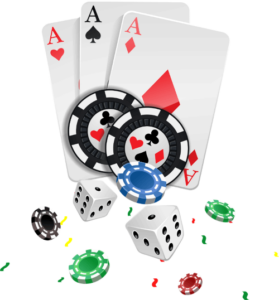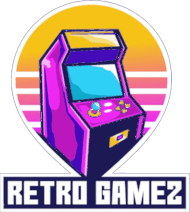
This is the lowball version of 7 Card Stud. Except for the lowball hand rankings, the action flows like Seven Card Stud.
As a result, it has gained appeal, especially among high rollers. It has also been part of the WSOP’s mixed games schedule for many years. The R (Razz) in their H.O.R.S.E.
Remember that while Razz is a lowball game, the hand rankings will be different than 2-7 Triple Draw.
Razz Hand Rankings
Lowball hand ranks vary. The Razz system is equivalent to the classification of low hands in Stud Hi/Lo and Omaha Hi/Lo, but not in 2-7 Triple Draw.
The Rules
- In Razz, aces are always low
- Straights and flushes don’t count
- Pairs count against us (true for all lowball formats).
- The nuts in Razz are A,2,3,4,5, the lowest 5-card hand conceivable. Technically, this is a straight, but that doesn’t matter in Razz.
The value of the top card, not the lowest, determines the strength of low hands. Beginners often look at the lowest card rather than the highest.
- 2,3,4,5,6
- A,2,5,7,8
Player 2 may assume he has the best hand because he has the Ace and his opponent has the Deuce. Player 1 wins this clash because his highest card is a 6, whereas Player 2’s is an 8. (remember, lower is better in this format).
In fact, the highest card in a hand usually defines it. Player 1’s hand is a Six-low, while Player 2’s is an Eight-low. To identify the winner when two players hold the identical top card, all additional cards are included in the hand naming. Eight-seven-five low, etc.
Making Hands in Razz
In Razz, there are no community cards (aside from one specific exception if the deck runs out of cards).
By the end of the game, each player will have seven cards. To build their hands, players can choose any five cards from the deck.
While we own all seven cards, it’s important to distinguish between up and down cards. Only we see downcards (like hole cards in Hold’em). In Razz, three of our seven cards are down (and Stud variants in general). Our final four cards will be upcards, visible to the entire table.
While upcards are still the player’s property, they provide a glimpse into our opponent’s hand. We’ll see four of each opponent’s seven cards by the betting round.
In Razz (and Stud), a player’s upcards are called his board. Our hand’s strength should constantly be compared to our opponent’s board’s strength.
Small Bets, Big Bets, and Antes
Stud games are structured differently from games like Hold’em and Omaha. For starters, no button. Instead, each player’s upcards dictate the action. In the first betting round, the best (worst) hand is the first to act, whereas in following streets, the worst (best) hand is.
But first, antes must be deposited in the pot. Antes are like blinds in Texas Hold’em, except that everyone must pay the ante every round.
In Stud games, the stakes frequently include the ante size.
The stakes in a Razz (sometimes Stud) game have three values. The small, huge, and ante bets. The ante is minor compared to the small and big bets. “Small bet” and “big bet” are words used in fixed limit poker games.
- Small Bet – The default bet/raise size in a fixed limit game.
- Big Bet — The default bet/raise size on later streets.
- The cards are handed after each player has anted.
Razz – 3rd St.
In Stud variations, the streets are named after the amount of cards each player owns on that street. Third Street is called a “third” street because each player gets three cards.
Then one upcard is dealt.
We can now see one upcard for each of our opponents.
The player with the highest (worst) upcard receives the first bet.
Given that aces are always low, a King is the worst conceivable upcard. If two players have the same rated upcard, a tiebreaker based on suits is used.
The player with the highest (worst) upcard must pay the “bring-in”. It’s worth between the ante and the modest bet. With $1/$2/$0.15, a reasonable bring-in size is $0.40. Even if it isn’t usually officially specified as part of the table stakes, it is a set value. A Stud/Razz game’s limits are defined by four values: small bet, big bet, ante and bring-in.
After a player pays the bring-in, the activity begins.
His choices are:
Check – The player pays the bring-in amount only. The action moves clockwise. The other players must either match or fold.
Complete — The first-to-act player may raise (complete) his bet to the small bet size. He does this when he loves the strength of his three dealt cards (like open-raising in Hold’em). The remaining players must either match, fold, or increase the tiny stake.
On Third Street, all bets and increases are tiny bets.
Razz – 4th St
A total of four cards are dealt to each participant after the Third Street betting action (two up, two down).
This time the action starts with the lowest (highest) ranked upcards.
Both up cards are considered. It is decided who acts first if both players have an Ace (the best potential upcard).
After determining the first-to-act participant, another round of betting follows.
On Fourth Street, all bets and increases are tiny bets.
Razz – 5th Ave
- Each player gets another upcard for a total of five cards (two down, three up).
- As usual, the action starts with the best-ranked upcards.
- The action now moves in increments of the big bet.
- 6th Street Action Razz
- Each player gets another upcard for a total of six cards (two down, four up).
- The betting action continues in small increments.
Razz – Seventh Street Action
Lastly, each player receives a seventh card face down (three down, four up). A last round of betting is done in increments of the huge bet.
Showdown occurs if more than one player remains in the hand after the betting round.
The best hand wins the pot.
